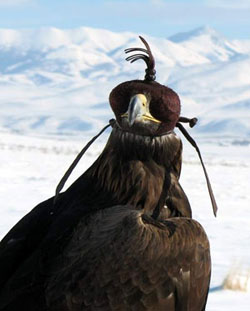
- Home Hood Design Hood Construction Order Testimonials
-
Hood Construction
Each hood is crafted to order by hand by Larry Ray. Over decades of experience as a falconer and a hood maker, he has refined his designs, construction techniques, and materials he incorporates into his hoods. The hood blocks have evolved as Larry has continued to develop his design and construction techniques.
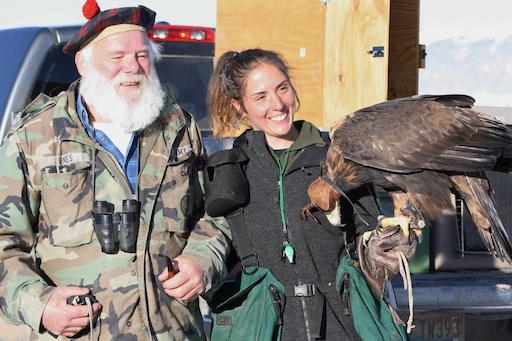
Lauren McGough and Jack Oar with eagle with Larry Ray hood
Photo courtesy of Lauren McGough
Materials
Cowhide and kip are the preferred materials for the body of the hood. These materials are highly durable, strong, retain their shape, and breathe to allow air exchange through the hood. Synthetic materials could prevent moisture from wicking away from the bird, or allow heat to build up. Cowhide is durable and flexible enough for comfort.
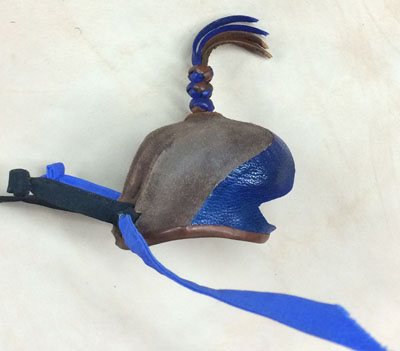
Leather details of the hood materials.
Stitching and Seam Closure
I use a line stitch instead of the more traditional cross stitch. The line stitch will ensure a tighter seam, while minimizing leather tear, because all the pull of the stitch is drawn against the edges of the seam instead of pulling away from the punch, which is where most leather tear occurs with cross stitches. My line stitches are reinforced with cement.
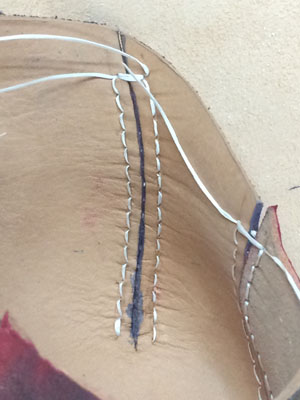
Inline stitching of the hood seams
Weight
I use the lightest leather possible that will ensure maximum comfort while retaining durability. Depending upon the species of hawk and corresponding hood size, cowhide, kip, kangaroo, and goat are all used to construct my hoods. In general, lighter leathers are used for hoods fitting accipiters and small species, while falcons and buteos will generally tolerate heavier leathers. Leather that is heavier than necessary, while perhaps allowing more attractive seaming, will deny comfort and ensure resentment when the hood is presented as well as a hanging head when the hood is in place. There are other potential hazards resulting from leather that is too heavy. Even when beveled, it may not allow the beak opening to properly conform to the bird's face, which can lead to abrasion, sores, and infection. There are trade-offs with the use of lighter leather. Stitching can cause lighter leather to roll slightly at the seams, raising a slight ridge. There can also be slight indentations caused by the stitches. However, some falconers actually find these characteristics to be attractive. Proper blocking will minimize them in any event.
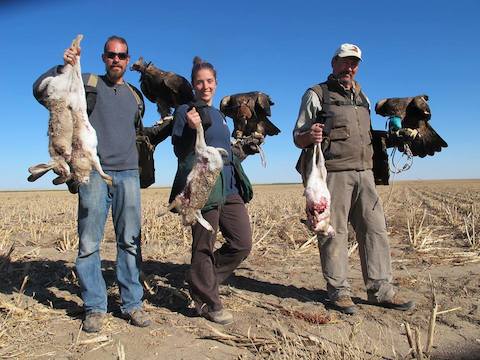
Golden Eagles in Larry Ray hoods
Photo courtesy of Lauren McGough
Hood Liners
In some instances I have gone to the use of hood liners. Such reinforcement allows a hood constructed with light leather to be strengthened in critical areas.
Top Knots
Turk's Heads are generally used for top knots. I use a four-strand, two knot system for small species, and a four strand, three knot system on hoods for medium and larger-sized hawks. A six strand, three knot tag is placed on the largest of hoods (Gyrkin and larger). The "bitter ends" will be kept fairly short, in the interest of weight saving.
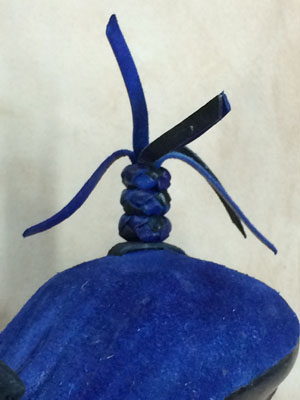
Turk's Head knot details
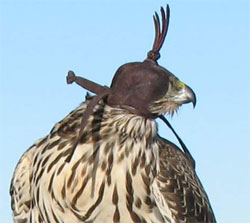
Female Goshawk with a hood fashioned with a single Turk's Head knot finished with a vertical fringe.
Photo courtesy of Dan McCarron
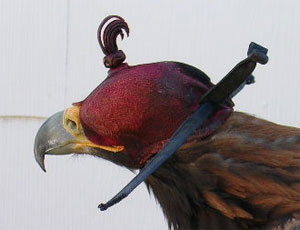
Golden Eagle in a Larry Ray hood with a curled fringe.
Photo courtesy of Dan McCarron
Braces
Fabric braces are employed on all hoods.
Customized Hoods
Customized hoods can be designed to the falconer's specifications and specialized for hard to fit species. Hoods can be made in a variety of sizes from male Kestrel all the way up to female Golden Eagle. Top knots can be braided in smaller or larger sizes. Various colors are available. Hoods can be made entirely smooth or rough-side out. Cross stitching and plumed hoods are available to the falconer willing to pay the additional cost necessary to compensate for the labor involved. All hoods are tagged, inside, with the falconer's name, unless otherwise specified.
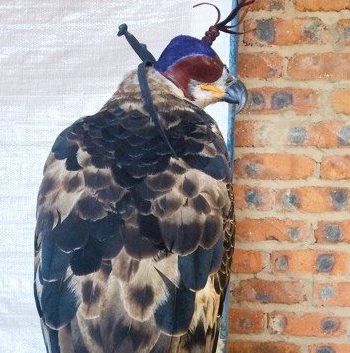
A male Crowned Eagle in a Larry Ray hood
Photo courtesy of Lauren McGough
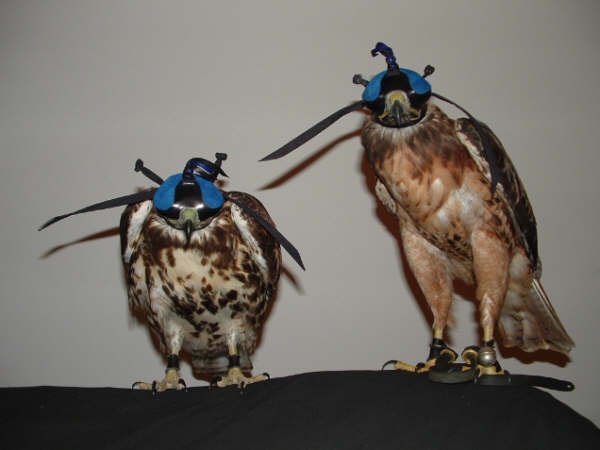
A pair of Red-Tail Hawks in Larry Ray hoods
Photo courtesy of Jayme Perlman
-
Copyright © 2014 - 2020 Larry Ray
Website by Lydia Ash - The Modern Apprentice
